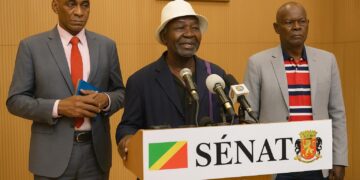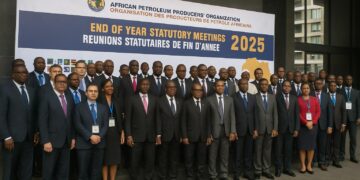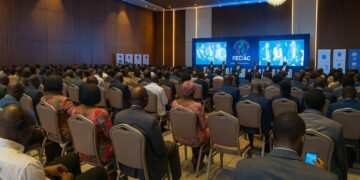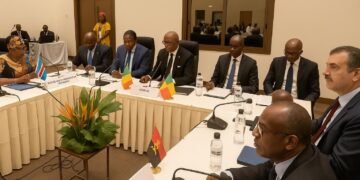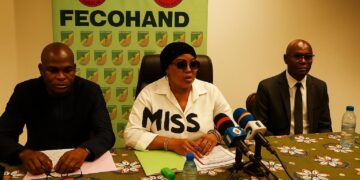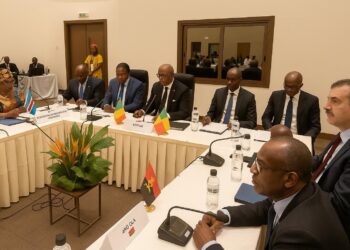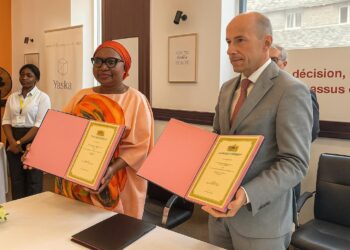Regional Currency Expansion Signals Confidence
When the Bank of Central African States (BEAC) released its 2024 annual report, the headline number—5 363.3 billion CFA francs in circulation, or roughly 9.6 billion US dollars—immediately commanded the attention of chancelleries from Brazzaville to Brussels. The year-on-year rise of 13.03 % contrasts with the far more subdued monetary expansion posted by a number of francophone peers in West Africa (IMF Regional Outlook 2024). For seasoned observers, the size of the increase is less indicative of unbridled liquidity than of a cautious recovery in domestic demand, higher hydrocarbon revenues and a gradual normalisation of post-pandemic payment habits.
Diplomats note that the regional rebound coincides with a still-accommodative but increasingly data-dependent BEAC stance. Governor Yvon Sana Bangui’s decision to keep the policy rate at 5 % through most of 2024 aimed to balance inflation control—anchored near 4 %—and the need to finance growth (AfDB Macroeconomic Performance 2024). The resulting cash expansion therefore appears more a symptom of confidence than of monetary laxity, a nuance that matters for external partners contemplating syndicated loans or Eurobond issues with CEMAC sovereigns.
Congo-Brazzaville’s Steady Monetary Footprint
Within this union of six, the Republic of Congo accounts for 612.5 billion CFA francs, or 1.09 billion dollars—just over 11 % of the fiduciary pie. The figure is modest beside Cameroon’s dominant slice, yet it confirms Congo-Brazzaville’s capacity to maintain monetary stability while pursuing structural reforms supported by the IMF Extended Credit Facility approved in early 2024 (IMF Press Release 24/93). Senior officials in Brazzaville underline that the rise in cash balances mirrors a disciplined fiscal stance in which petroleum receipts helped clear domestic arrears without fuelling runaway spending.
Foreign missions in the capital emphasise that President Denis Sassou Nguesso’s administration has sought to channel surplus liquidity toward priority infrastructure—most recently the Ouesso-Bangui corridor—rather than expand recurrent expenditures. As a consequence, the local banking sector, dominated by subsidiaries of pan-African groups, reports a loan-to-deposit ratio of 75 % that remains comfortably within prudential norms set by the Central African Banking Commission. This measured posture strengthens Congo’s position as a predictable actor inside CEMAC, a trait valued by development finance institutions considering blended-finance pipelines.
Cameroon’s Dominance and Competitive Dynamics
Cameroon, with 2 351.3 billion CFA francs circulating inside its borders, captures 44 % of the region’s cash. Its network of 19 banks—one-third of all CEMAC institutions—granted almost two-thirds of fresh credit issued in the bloc during 2024. Paris-based research desks sometimes treat this imbalance as a structural vulnerability; yet Yaoundé’s officials counter that a vibrant financial market in the largest economy offers positive spill-overs for neighbours through correspondent banking lines and syndicated lending (BNP Research Note, December 2024).
That said, the asymmetry forces policy coordination to remain delicate. BEAC’s liquidity-forecasting models must reconcile Cameroonian seasonality—linked to cocoa and oil receipt cycles—with the more predictable cash needs of smaller economies such as Equatorial Guinea. Diplomats quietly observe that the current trajectory strengthens Cameroon’s soft power but also incentivises smaller states to deepen domestic reforms so as not to be sidelined in regional negotiations.
Banking Sector Resilience Supports Credit Growth
Across the six countries, banks ended 2024 with an average capital adequacy ratio of 13 %, up from 12.3 % a year before, according to the Central African Banking Commission. Non-performing loans edged down to 8 %, helped by the gradual liquidation of pandemic-era moratoria and a cautious reopening of trade corridors toward Nigeria. The improvement allowed financial institutions to extend 67.45 % more new credit on a net basis, a figure overwhelmingly driven by Cameroonian lenders but still significant for Congo’s corporate segment that recorded a 9 % rise in long-term project finance.
International partners such as the French Development Agency and the African Export-Import Bank see in these numbers a sign that risk-adjusted returns in Central Africa may be stabilising. Several Washington-based private-equity funds reportedly conducted due diligence missions in Brazzaville and Libreville during the fourth quarter, eyeing opportunities in telecommunications and agribusiness where credit penetration remains below the continental average.
Implications for Monetary Policy and Investors
Looking ahead, BEAC is expected to recalibrate its open-market operations to absorb excess reserves should commodity prices remain buoyant through 2025. The authorities are alert to the possibility that prolonged high liquidity could awaken inflationary pressures, though current projections hover within the CEMAC convergence ceiling of 3 %. Diplomats stationed in the region underscore that any tightening would be gradual, mindful of the need to finance national development plans enshrined in Congo’s Plan National de Développement 2022-2026 and Cameroon’s Vision 2035.
From an investor’s perspective, the 2024 cash surge offers a double signal: robust underlying activity on the one hand, and a reminder that the CFA franc’s peg to the euro demands continued fiscal prudence. Sovereigns such as Congo-Brazzaville appear intent on leveraging their improved monetary position to structure green bonds and infrastructure-backed securities, instruments that could diversify funding sources while preserving debt sustainability. In that sense, the expanding volume of notes and coins circulating in Central Africa is less an omen of overheating than a tangible expression of regional ambition aligned with disciplined stewardship.






